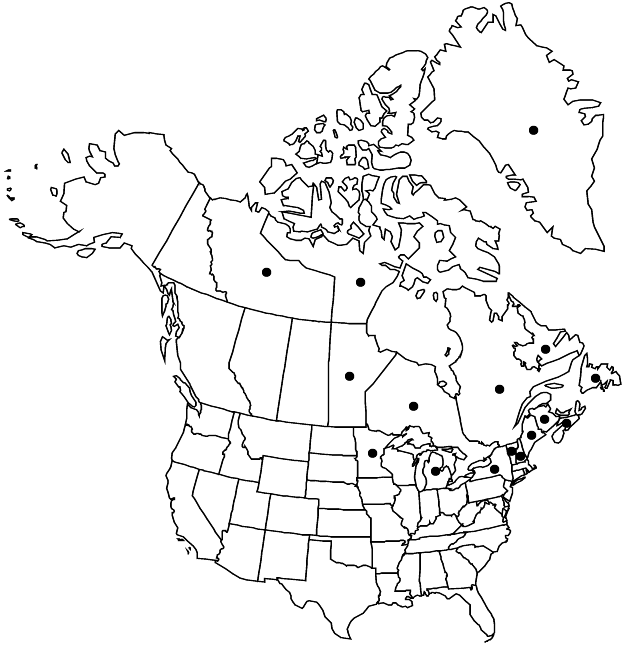Difference between revisions of "Saxifraga paniculata"
Gard. Dict. ed. 8, Saxifraga no. 3. 1768 ,.
FNA>Volume Importer |
FNA>Volume Importer |
(No difference)
| |
Revision as of 23:01, 16 December 2019
Plants forming cushionlike tufts, stoloniferous, rhizomatous. Leaves basal and cauline; petiole absent; blade oblong to obovate, unlobed, [5–]8–35[–50] mm, leathery-fleshy, margins finely serrate (teeth whitish), proximally ciliate, with lime-secreting hydathode (secretions obvious), apex obtuse to ± acute, surfaces glabrous. Inflorescences 2–20-flowered, narrow, distally branched thyrses or cymes, sometimes solitary flowers, 6–40 cm, purple-tipped stipitate-glandular; bracts sessile. Flowers: sepals erect, (often reddish), oblong to ovate, margins eciliate, surfaces hairy; petals white to cream or pink, sometimes orange- or purple-spotted, elliptic to oblong or obovate, 3–6 mm, longer than sepals; ovary 1/2+ inferior. 2n = 28.
Phenology: Flowering late spring–summer.
Habitat: Rocky ledges and crevices, often calcareous areas
Elevation: 0-1200[-2200] m
Distribution

Greenland, Man., N.B., Nfld. and Labr., N.W.T., N.S., Nunavut, Ont., Que., Maine, Mich., Minn., N.H., N.Y., Vt., Europe, Atlantic Islands (Iceland).
Discussion
C. Reisch (2008) studied the phylogeography of Saxifraga paniculata. North American populations originated postglacially from refugia south of the ice. Reisch suggested that North American populations may belong to subsp. laestadii (Neuman) T. Karlsson, found also in Iceland and northern Norway. The Manitoba report originates from Clearwater Lake (R. Humphrey s.n., 13 Sept. 1993, WIN 62868), where shaded, cool, calcareous cliffs provide suitable habitats that also host other eastern disjuncts (B. A. Ford, pers. comm.).
Selected References
None.